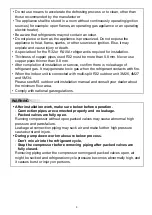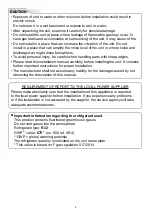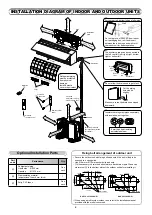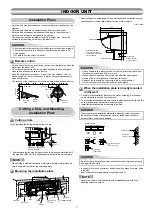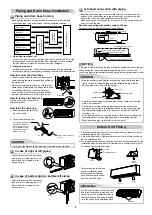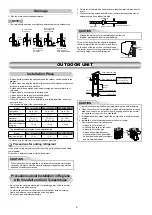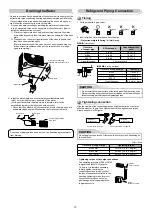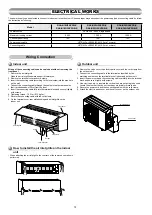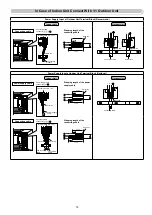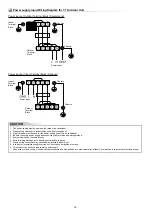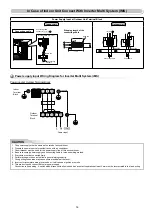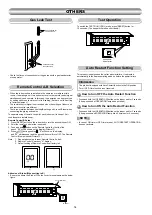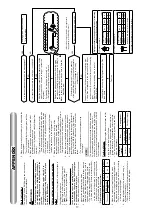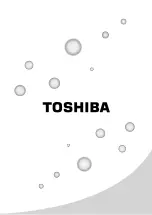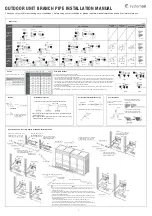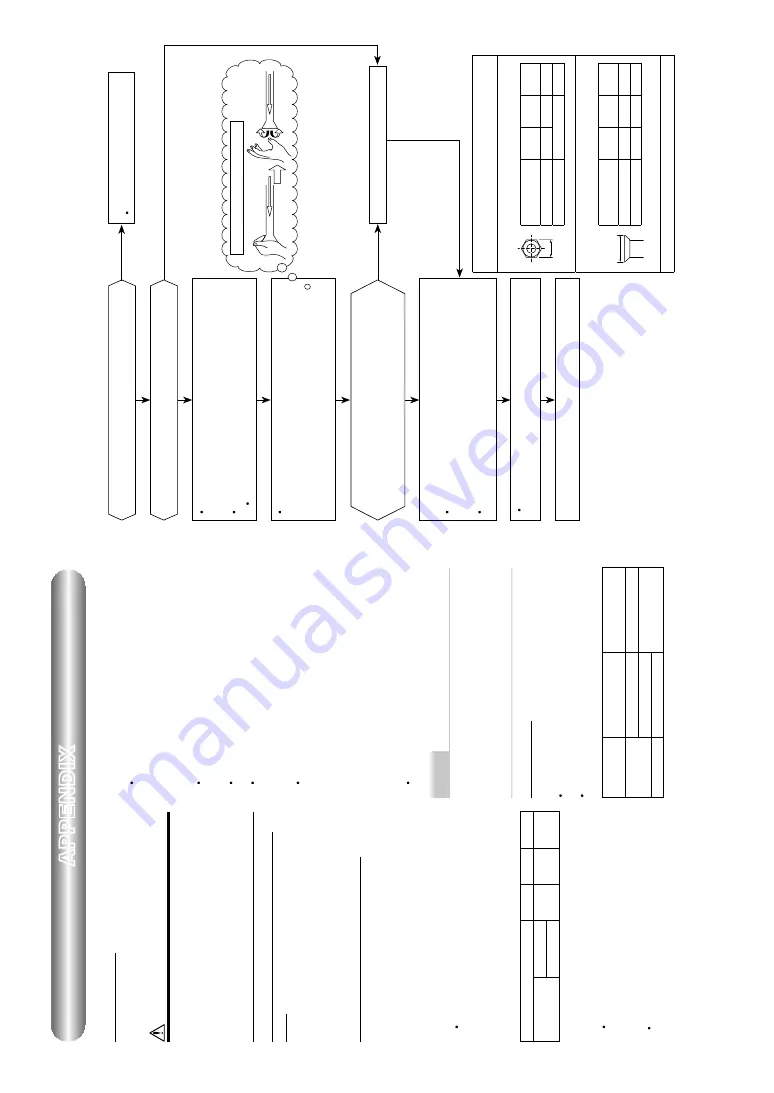
The operating pressure of R32 or R410A is high
(1.6 times that of R22). If there is a scratch or dent
on the pipe or a thinner pipe is used, the pressure
strength may be inadequate, which may cause the
pipe to break in the worst case.
pipes of air conditioners that have adopted R32 or R410A
in other companies.
Re-machine the flare machining size to size for
R32 or R410A.
Becomes a little larger for R32 or R410A
APPENDIX
W
o
rk instructions
The existing R22 and R410A
piping can be reused for
inverter R32 product installations.
W
ARNING
Confirming the existence of scratches or dents on
the existing pipes and confirming the reliability of
the pipe strength are conventionally referred to the
local site.
If the specified conditions can be cleared, it is
possible to update existing R22 and R410A
pipes
to those for R32 models.
Basic conditions needed to reuse existing
pipes
Check and observe the presence of three conditions in
the refrigerant piping works.
1.
Dry
(There is no moisture inside of the pipes.)
2.
Clean
(There is no dust inside of the pipes.)
3.
T
ight
(There are no refrigerant leaks.)
Restrictions for use of existing pipes
In the following cases, the existing pipes should
not be reused as they are. Clean the existing pipes
or exchange them with new pipes.
1.
When a scratch or dent is heavy
, be sure to use new
pipes for the refrigerant piping works.
2.
When the existing pipe thickness is thinner than the
specified “Pipe diameter and thickness,” be sure to
use new pipes for the refrigerant piping works.
*
Pipe diameter and thickness (mm)
Pipe outer diameter
Ø6.4
Ø9.5
Ø12.7
Thickness
R32, R410A
0.8
0.8
0.8
R22
3.
When the outdoor unit was left with the pipes
disconnected, or the gas leaked from the pipes and
the pipes were not repaired and refilled.
There is the possibility of rain water or air
, including
moisture, entering the pipe.
4.
When refrigerant cannot be recovered using a
refrigerant recovery unit.
There is the possibility that a large quantity of dirty
oil or moisture remains inside the pipes.
5.
When a commercially available dryer is attached to the
existing pipes.
There is the possibility that copper green rust has
been generated.
6.
When the existing air conditioner is removed after
refrigerant has been recovered.
Check if the oil is judged to be clearly dif
ferent from
normal oil.
The refrigerator oil is copper rust green in color:
There is the possibility that moisture has mixed with
the oil and rust has been generated inside the pipe.
There is discolored oil, a large quantity of residue,
or a bad smell.
A
large quantity of shiny metal dust or other wear
residue can be seen in the refrigerant oil.
7.
When the air conditioner has a history of the
compressor failing and being replaced.
When discolored oil, a large quantity of residue,
shiny metal dust, or other wear residue or mixture of
foreign matter is observed, trouble will occur
.
8.
When temporary installation and removal of the air
conditioner are repeated such as when leased etc.
9.
If the type of refrigerator oil of the existing air
conditioner is other than the following oil (Mineral oil),
Suniso, Freol-S, MS (Synthetic oil), alkyl benzene
(HAB, Barrel-freeze), ester series, PVE only of ether
series.
The winding-insulation of the compressor may
deteriorate.
NOTE
The above descriptions are results have been confirmed
by our company and represent our views on our air
conditioners, but do not guarantee the use of the existing
Curing of pipes
When removing and opening the indoor or outdoor unit for
a long time, cure the pipes as follows:
Otherwise rust may be generated when moisture or
foreign matter due to condensation enters the pipes.
The rust cannot be removed by cleaning, and new
pipes are necessary
.
Placement
location
Te
rm
Curing manner
Outdoors
1 month or more
Pinching
Less than 1 month
Pinching or taping
Indoors
Every time
Are there scratches or dents on the existing pipes?
Is it possible to operate the existing air conditioner?
After the existing air conditioner is operated in cooling
mode for approx. 30 minutes or longer
,* recover the
refrigerant.
For cleaning the pipes and recovering oil
Refrigerant recovery: Pump down method
Remove the existing air conditioner from the piping
and carry out flushing (nitrogen pressure 0.5 MPa) to
remove any remains inside of the pipe.
Note:
In case of twin pipes, also be sure to flush the
branching pipe.
Connect the indoor / outdoor units to the existing pipe.
Use a flare nut attached to the main unit for the indoor
/ outdoor units. (Do not use the flare nut of the existing
pipe.)
(Airtight test), V
acuum dry
, Refrigerant charge, Gas
leak check
Te
st run
W
as largely discolored oil or a large quantity
of remains discharged? (When the oil deteriorates,
the color of the oil changes to a muddy
or black color
.)
Existing pipes: Cannot be used.
Use new pipes.
Clean the pipes or use new pipes.
Piping necessary to change the flare nut / machining
size due to pipe compression
1) Flare nut width: H
H
(mm)
Copper pipe outer
diameter
Ø6.4
Ø9.5
Ø12.7
For R32, R410A
17
22
26
For R22
Same as above
24
2) Flare machining size:
A
A
(mm)
Copper pipe outer
diameter
Ø6.4
Ø9.5
Ø12.7
For R32, R410A
9.1
13.2
16.6
For R22
9.0
13.0
16.2
Do not apply refrigerator oil to the flare surface.
(If there is discharge of remains, it is judged that a
large quantity of remains are present.)
YES
YES
NO
NO
NO
YES
Nitrogen gas pressure 0.5 MPa
17
Summary of Contents for RAS-18J2AVSG-E1
Page 20: ...18 ...

